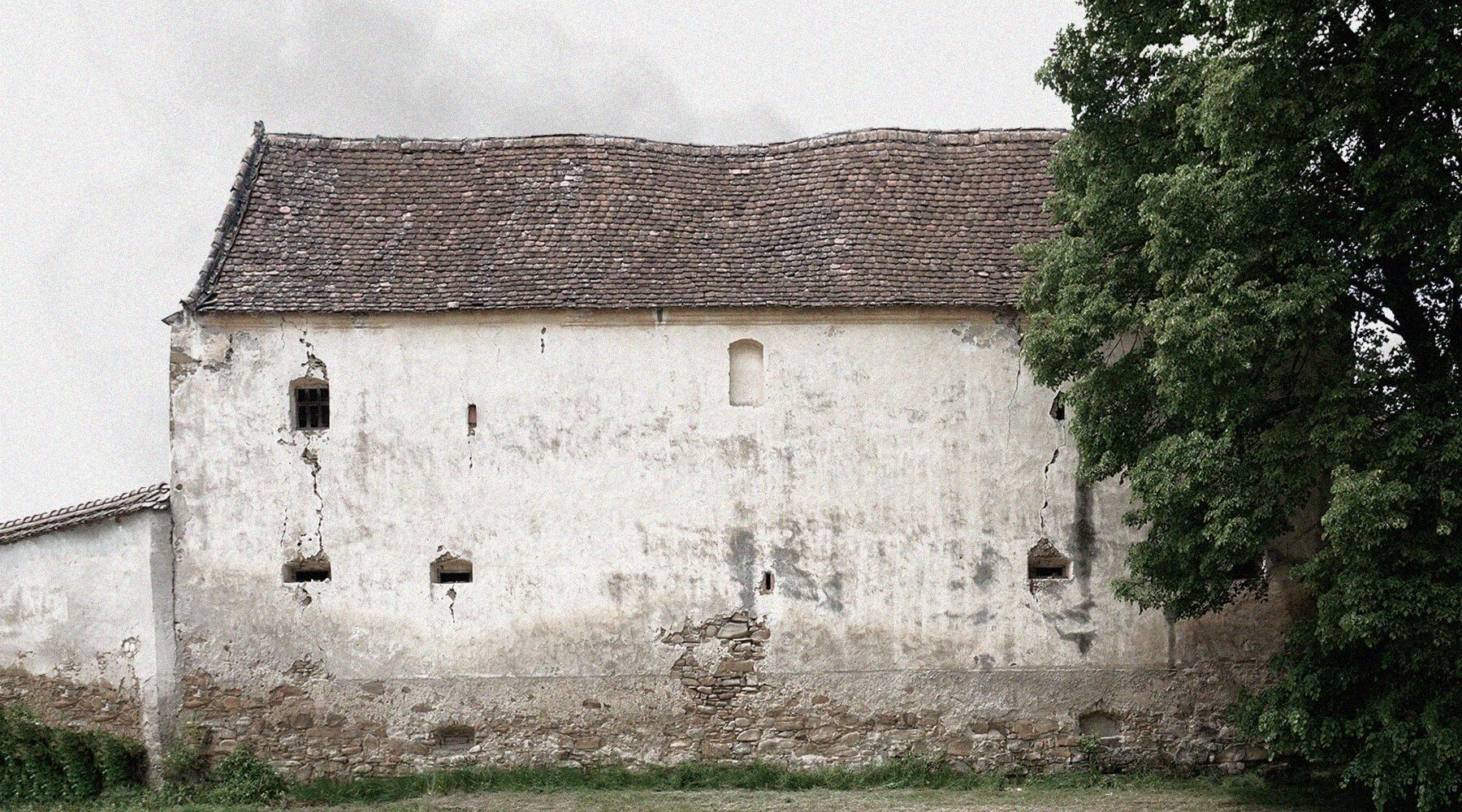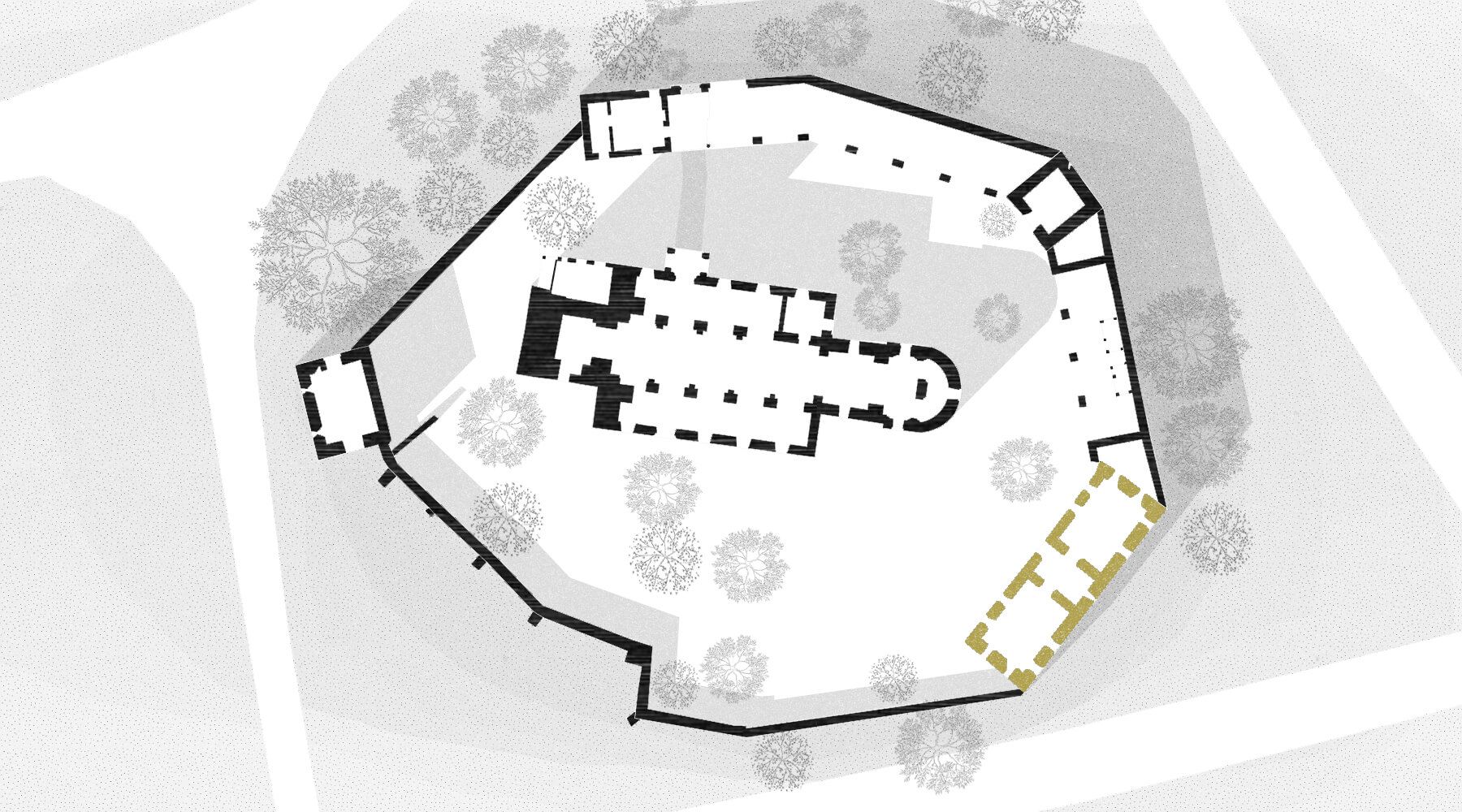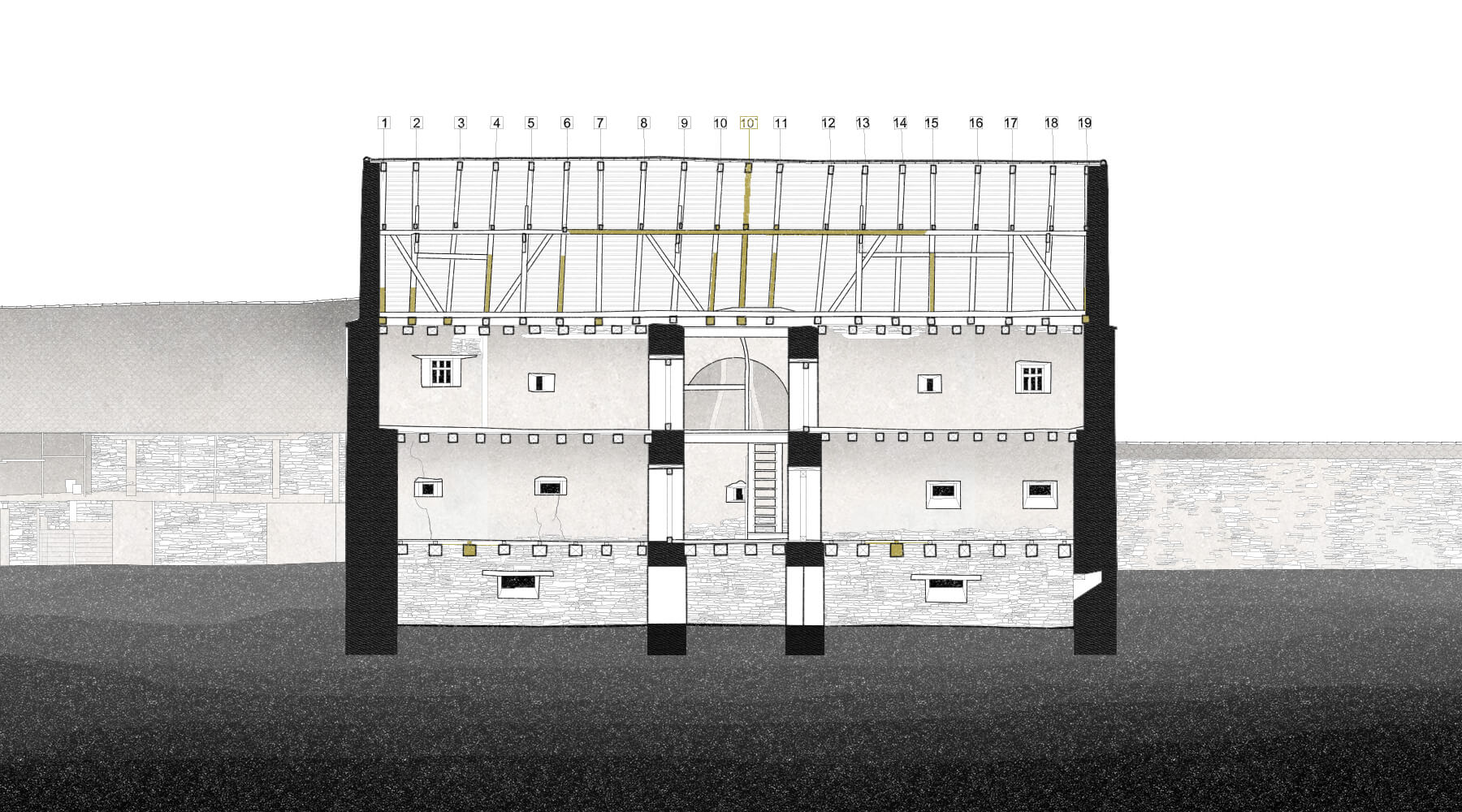The evangelical church from Bruiu
There are over 160 fortified churches in Transilvania, approximately 100 built during the Middle Ages. Currently, more than half of them are in various states of disrepair.
Dächerprogramm (roof programme) refers to maintenance work for the roof of the buildings that are currently in an advanced state of degradation, and improvement of the water evacuation system. The main purpose of these interventions is to guarantee the preservation of these monuments through ensuring the sealness of the roof, therefore preventing water infiltration. The carpentry work is executed through traditional techniques, according to the standards of classical restoration. The ceramic tile cover is typically taken apart and checked manually, followed by the reuse of the elements that conform to the quality standards and replacement of the inadequate ones with second hand or manually produced tiles. The water drainage system is improved through cleaning the existing gutters, replacing the parts that are degraded, installing gutters where they are needed, or, alternatively, designing a duct on the perimeter of the building to direct the water outwards.
Bruiu village is located in the so-called Krautwinkel (cabbage corner), South-West from Cincu. It is accessible from DN1, the area between Brașov and Sibiu, from the crossroads near Arpașu de Jos, through a pebble road. The village has a main street which from East to West, and intersects two perpendicular roads near the center of the village, creating a small square where the Fortified Church is located.
In the first half of the XIII-th century, a romanesque basilica was built, under the protection of Saint Nicholas. The subsequent renovations and changes, especially during the second half of the XIX-th century and the beginning of the XXth century, have significantly affected the previous romanesque architectural elements. The original basilica presents a number of similarities with other romanesque churches from neighboring villages, such as Chirpăr, Hosman, or Șomartin. The original elements that have been salvaged are the side walls of the nave and the tower walls.
The interior of the church is determined by the works done near the end of the XV-th century. The pillars have been fortified using pilasters which now hold the weight of the late gothic vault. The old romanesque windows have been closed. The square shape of the choir is closed with a gothic vault, over which sits the three-stories tower.








